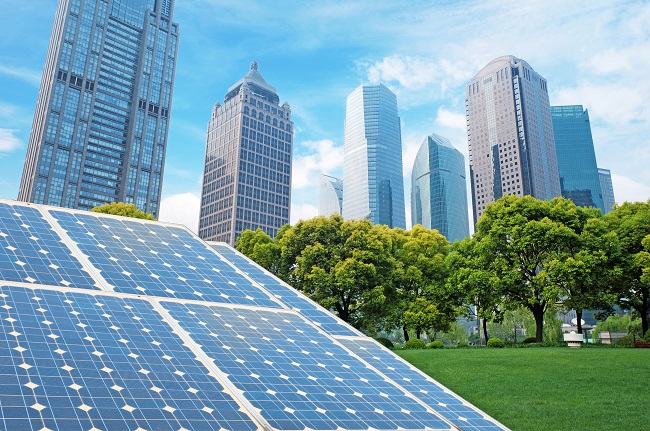Top 10 applications for solar energy
What is Solar Energy?
Solar energy is the technology used to harness the sun’s energy and convert it into electricity to power homes, businesses and industry.
Solar Energy Applications
Solar energy has become such a hot topic that PIF has decided to celebrate ten ingenious solar energy ideas and solar energy applications that are currently lighting up the tech world.

Solar Plane
The breathtaking Solar Impulse plane, which comprises 12,000 solar panels, can fly day and night using sunlight alone. After undergoing successful test flights across Switzerland, the Mediterranean, the US (from coast to coast) and through the night between two continents, the ultimate goal is to attempt the first Round-The-World Solar Flight in 2015.
Solar Tunnel
A 2.2mile long tunnel in Belgium has been fitted with 16,000 solar panels, over a 50,000-sq metre expanse, that produces more than 3,000 megawatt-hours of electricity each year. Enough to power 4,000 trains, as well as the signalling, lighting, and heating for stations and junctions along the high-speed Antwerp to Amsterdam route. U.S based solar developer, Enfinity, estimated that their installation would lower carbon dioxide emissions by 2,400 tons annually.
Solar Roads
Solar Roadways are prototyping a miraculous road surface, made up of hexagonal solar panels, that can collect energy and subsequently pay for itself. Add in LED road markings, and heating elements to prevent snow and ice build-up, and the possibilities for revolutionising car parks, roads and motorways are virtually endless.
Solar Stadium
Taiwan’s dragon-shaped 'World Games Stadium' is the largest solar-powered stadium in the world. Japanese architect Toyo Ito’s stunning 50,000 seat arena boasts a 14,155m squared roof covered with 8,844 solar panels that could potentially generate 1.14 gigawatt hours of electricity each year. That's enough to power up to 80% of the surrounding neighbourhood and more than enough to illuminate the track and field with 3,300 lux of spotlighting.
Solar Paint
Researchers at the University of Notre Dame have developed low-cost solar paint using nano-sized particles of titanium dioxide that are coated with cadmium sulphide or cadmium selenide. Brushed onto a conducting material, and exposed to sunlight, the paint creates electricity with a light-to-energy conversion efficiency of one percent. When that can be increased to a marketable rate it'll add a whole new dimension to watching paint dry.
Space-age Solar
Californian start-up, Solaren, has opened negotiations with Pacific Gas and Electric Company of California to deliver 200 megawatts of continuous power (enough to power 150,000 homes) for at least 15 years starting in 2016. Their electricity will be generated from solar panels fixed onto satellites orbiting the earth, which is then converted into radio waves and beamed directly to a receiving station in Fresno County, California.
Solar 'Leaf'
MIT researcher Daniel Nocera developed an energy storage solution that mimics nature with what he's coined the 'Artificial Leaf.' Aping photosynthesis, his ‘leaf’ uses solar energy to split water into hydrogen and oxygen and then the emitted gases can be stored in a fuel cell for off-grid use. Nocera claims that his technology is ten times more efficient than nature and his tech start-up, Sun Catalytix, is working on bringing his vision to market.

Solar Windows
Oxford Photovoltaics has pioneered perovskite thin-film solar cells, which can be printed directly onto glass to produce a transparent coating. Windows treated with the new electricity generating coating (which produces the world’s smallest functional solar cell at a quarter of the size of a grain of rice!) remain see-through, yet can convert sunshine to energy with no need for specialised production facilities.
Solar Fabric
Boffins at New York based, Pvilion, are designing, manufacturing, and installing electric vehicle charging stations using tensioned flexible solar panels. In other words their patent pending technology allows them to twist, bend, flex, and stretch solar panels into sculptural shapes that, like their innovative Solar Sail charging station, offer beautiful solar solutions for our modern lifestyles.
Solar Efficiency
China Sunergy are set to pilot a solar cell that can absorb light from the front and back that is predicted to generate 10-20 percent more electricity per year compared to one-sided panels. While the Fraunhofer Institute for Solar Energy Systems ISE, Soitec, CEA-Leti and the Helmholtz Center Berlin have jointly announced a new record for solar efficiency of 44.7% using concentrated photovoltaic (CPV) technology.
Get the latest process industry news
Interested in receiving even more industry-leading news from Process Industry Forum delivered directly to your inbox? Then sign up to our free newsletter. Bringing you the latest news, trends, innovations and opinion from across the process industry, our exclusive newsletter gives you all the industry insights of the moment in one, easy-to-digest bulletin. Stay ahead of the competition with regular process industry news instalments from PIF.
